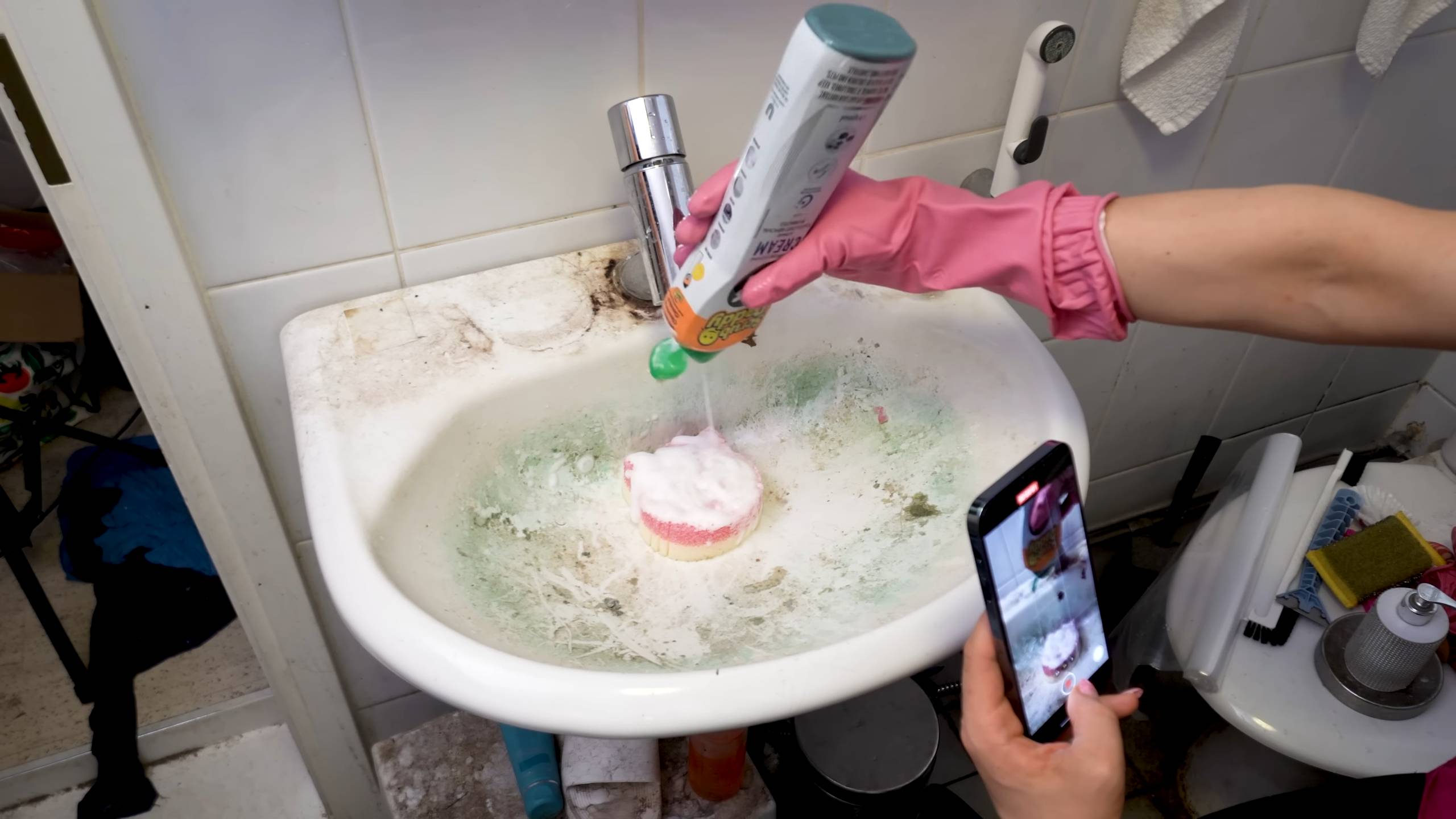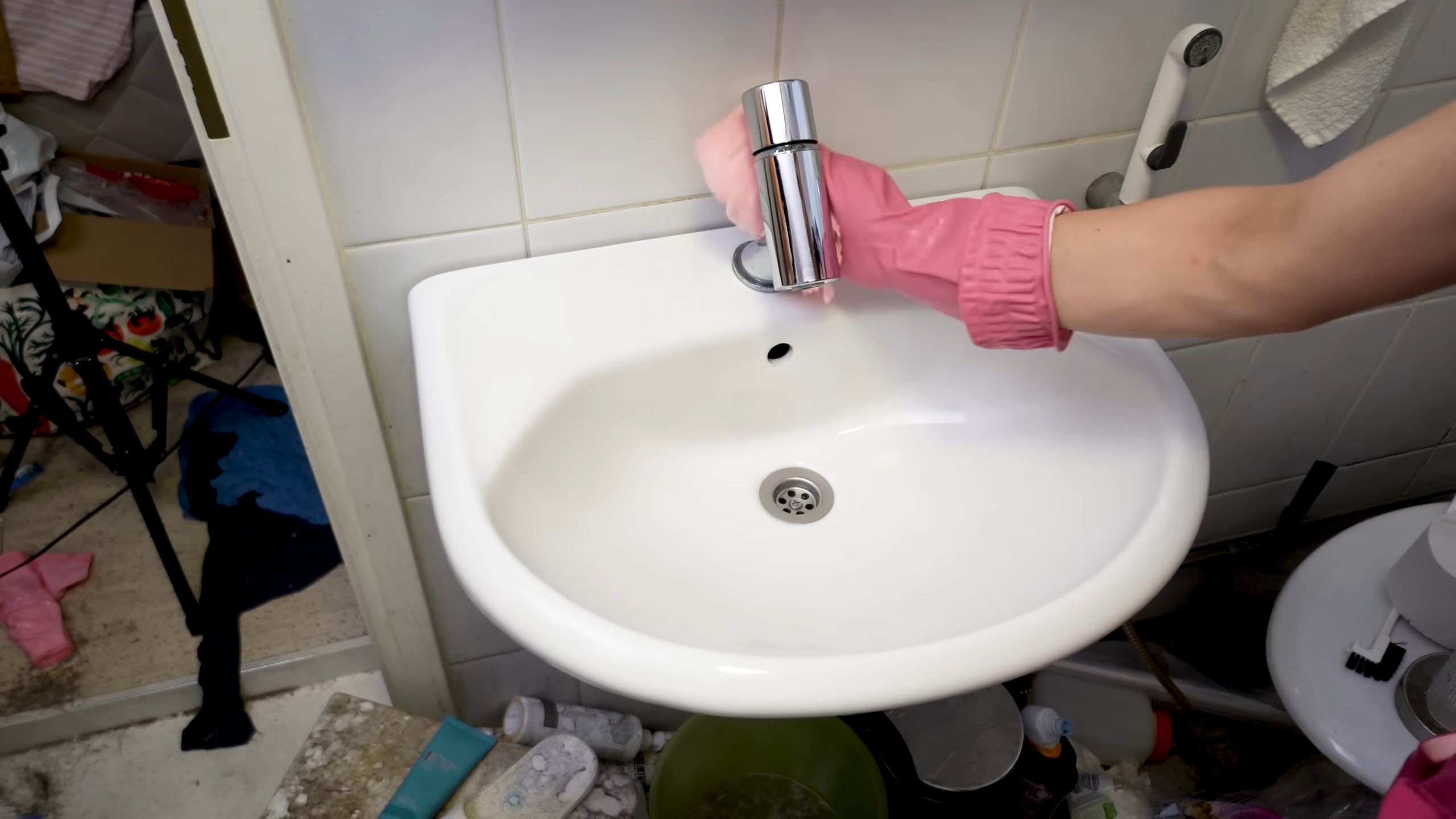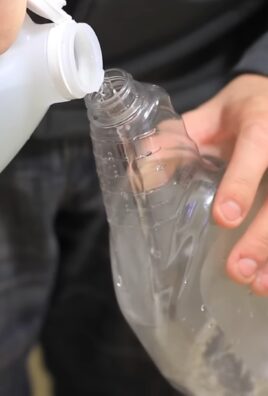CIF Multipurpose Cleaner Uses: Unlock the surprising potential hidden within that familiar bottle! I bet you’ve always thought of CIF as just a kitchen and bathroom staple, right? Well, prepare to have your cleaning world turned upside down. This isn’t just about sparkling countertops anymore; we’re diving deep into the realm of unexpected DIY cleaning hacks that will save you time, money, and maybe even a trip to the store.
For generations, cleaning products like CIF have been relied upon to maintain hygiene and order in our homes. The desire for effective and efficient cleaning solutions is deeply rooted in our history, reflecting our innate need for a healthy and comfortable living environment. But what if I told you that the same product your grandmother used to scrub the sink could also revive your sneakers or tackle stubborn stains on your outdoor furniture?
In today’s busy world, who has time to spend hours scrubbing? We all crave shortcuts and clever solutions that simplify our lives. That’s where these CIF Multipurpose Cleaner Uses come in. I’m going to show you how to harness the power of this everyday cleaner to tackle a variety of cleaning challenges you never thought possible. From removing scuff marks to restoring shine, get ready to discover the secret weapon that’s been hiding in plain sight. Let’s get cleaning!

Growing Brussels Sprouts in Containers: A DIY Guide
Hey there, fellow gardening enthusiasts! I’m so excited to share my experience with growing Brussels sprouts in containers. It might seem daunting, but trust me, with a little planning and effort, you can enjoy fresh, homegrown Brussels sprouts even if you don’t have a sprawling garden. Let’s dive in!
Choosing the Right Container and Soil
First things first, we need to set the stage for our little sprout friends. The right container and soil are crucial for their success.
* Container Size: Brussels sprouts need room to grow, both above and below the soil. I recommend a container that’s at least 12 inches in diameter and 12 inches deep. A 5-gallon bucket or a large grow bag works perfectly. Bigger is generally better, as it gives the roots more space to spread out and absorb nutrients.
* Drainage: Excellent drainage is non-negotiable. Brussels sprouts hate sitting in soggy soil. Make sure your container has plenty of drainage holes at the bottom. If not, you can drill some yourself.
* Soil Mix: Forget garden soil! It’s too heavy and compacts easily in containers. Instead, opt for a high-quality potting mix. I like to use a mix of equal parts:
* Compost: This provides essential nutrients and improves drainage.
* Peat moss or coco coir: These help retain moisture.
* Perlite or vermiculite: These improve aeration and drainage.
Planting Your Brussels Sprouts
Now for the fun part – getting those sprouts in the ground (or rather, the container!).
* Starting from Seed vs. Transplants: You can start Brussels sprouts from seed indoors about 6-8 weeks before the last expected frost. However, for beginners, I highly recommend buying transplants from a local nursery. It’s much easier and faster!
* Choosing Transplants: Look for healthy transplants with sturdy stems and vibrant green leaves. Avoid plants that are yellowing, wilting, or have signs of pests or diseases.
* Planting Time: Brussels sprouts are cool-season crops, so the best time to plant them is in early spring or late summer for a fall harvest. Check your local climate for the best planting times.
* Planting Depth: Dig a hole in the potting mix that’s slightly larger than the root ball of the transplant. Gently remove the transplant from its container and loosen the roots a bit. Place the transplant in the hole, ensuring that the top of the root ball is level with the soil surface. Backfill with potting mix and gently firm the soil around the plant.
* Spacing: If you’re planting multiple Brussels sprouts in the same container (which I don’t recommend for beginners, but it’s possible with a very large container), space them at least 18 inches apart.
Caring for Your Brussels Sprouts
This is where the real work begins, but don’t worry, it’s manageable!
* Watering: Brussels sprouts need consistent moisture, especially during hot weather. Water deeply whenever the top inch of soil feels dry to the touch. Avoid overwatering, as this can lead to root rot. I usually water every 2-3 days, but it depends on the weather.
* Fertilizing: Brussels sprouts are heavy feeders, meaning they need a lot of nutrients. Fertilize them every 2-3 weeks with a balanced liquid fertilizer, following the instructions on the label. You can also amend the soil with compost tea for an extra boost.
* Sunlight: Brussels sprouts need at least 6 hours of sunlight per day. Place your container in a sunny spot in your yard or on your balcony.
* Support: As Brussels sprouts grow taller, they may need support to prevent them from toppling over. You can use stakes or tomato cages to provide support. I’ve found that bamboo stakes work well and look quite natural.
* Pest Control: Brussels sprouts are susceptible to several pests, including cabbage worms, aphids, and flea beetles. Regularly inspect your plants for signs of pests and take action immediately.
* Cabbage Worms: These are green caterpillars that munch on the leaves. Handpicking them off the plants is the most effective method. You can also use Bacillus thuringiensis (Bt), a natural insecticide that’s safe for humans and pets.
* Aphids: These are small, sap-sucking insects that can weaken plants. Spray them off with a strong stream of water or use insecticidal soap.
* Flea Beetles: These are tiny, jumping beetles that create small holes in the leaves. Cover your plants with row covers to prevent them from reaching the plants. You can also use diatomaceous earth, a natural insecticide that’s safe for humans and pets.
* Weed Control: Keep the container free of weeds, as they can compete with the Brussels sprouts for nutrients and water. Hand-pull weeds as soon as you see them.
* Removing Yellowing Leaves: As the plant grows, the lower leaves may start to yellow and die. Remove these leaves to improve air circulation and prevent disease.
Harvesting Your Brussels Sprouts
The moment we’ve all been waiting for! Harvesting your homegrown Brussels sprouts is incredibly rewarding.
* Harvest Time: Brussels sprouts are typically ready to harvest about 90-100 days after planting. The sprouts should be firm, green, and about 1-2 inches in diameter.
* Harvesting Technique: Start harvesting from the bottom of the plant, as the lower sprouts mature first. Twist or cut the sprouts off the stem, leaving the upper sprouts to continue developing.
* Post-Harvest Care: After harvesting, you can store Brussels sprouts in the refrigerator for up to a week. To prolong their shelf life, you can blanch and freeze them.
Troubleshooting Common Problems
Even with the best care, you might encounter some challenges along the way. Here are some common problems and how to address them:
* Sprouts Not Forming: This can be caused by several factors, including insufficient sunlight, poor soil, or lack of nutrients. Make sure your plants are getting enough sunlight, fertilize them regularly, and amend the soil with compost.
* Sprouts Are Loose and Leafy: This is often caused by hot weather. Brussels sprouts prefer cool temperatures. Try to provide some shade during the hottest part of the day.
* Sprouts Are Bitter: This can be caused by overwatering or underwatering. Make sure you’re watering consistently and allowing the soil to dry out slightly between waterings.
* Plants Are Attacked by Pests: As mentioned earlier, regularly inspect your plants for pests and take action immediately.
Step-by-Step Instructions: A Detailed Guide
Let’s break down the entire process into numbered steps for ultimate clarity:
1. Gather Your Supplies: You’ll need a large container (at least 12 inches in diameter and depth), high-quality potting mix, Brussels sprouts transplants, a watering can, fertilizer, and optional support (stakes or tomato cages).
2. Prepare the Container: Ensure your container has adequate drainage holes. If not, drill some.
3. Fill the Container: Fill the container with potting mix, leaving about an inch of space at the top.
4. Plant the Transplant: Dig a hole in the potting mix that’s slightly larger than the root ball of the transplant. Gently remove the transplant from its container and loosen the roots a bit. Place the transplant in the hole, ensuring that the top of the root ball is level with the soil surface. Backfill with potting mix and gently firm the soil around the plant.
5. Water Thoroughly: Water the transplant thoroughly until water drains out of the drainage holes.
6. Place in a Sunny Location: Place the container in a location that receives at least 6 hours of sunlight per day.
7. Water Regularly: Water deeply whenever the top inch of soil feels dry to the touch.
8. Fertilize Every 2-3 Weeks: Fertilize with a balanced liquid fertilizer, following the instructions on the label.
9. Provide Support (If Needed): As the plant grows taller, provide support with stakes or tomato cages.
10. Inspect for Pests Regularly: Regularly inspect your plants for signs of pests and take action immediately.
11. Remove Yellowing Leaves: Remove any yellowing or dead leaves to improve air circulation and prevent disease.
12. Harvest When Ready: Harvest the Brussels sprouts when they are firm, green, and about 1-2 inches in diameter, starting from the bottom of the plant.
Tips for Success
Here are a few extra tips to help you succeed with container-grown Brussels sprouts:
* Choose the Right Variety: Some Brussels sprouts varieties are better suited for container gardening than others. Look for compact or dwarf varieties.
* Rotate Your Crops: Avoid planting Brussels sprouts in the same container year after year,

Conclusion
So, there you have it! Unlocking the full potential of your CIF Multipurpose Cleaner goes far beyond just wiping down countertops. This DIY approach, focusing on creative CIF Multipurpose Cleaner Uses, not only saves you money by reducing the need for specialized cleaning products, but also empowers you to tackle a wider range of household challenges with a single, trusted solution.
The beauty of this method lies in its adaptability. Feel free to experiment with different dilution ratios to find what works best for your specific needs and surfaces. For instance, a slightly stronger solution might be ideal for tackling stubborn grease stains in the kitchen, while a more diluted mixture could be perfect for gently cleaning delicate surfaces like painted walls or sealed wood.
Remember, safety is paramount. Always test your diluted CIF solution on an inconspicuous area first to ensure it doesn’t damage or discolor the surface. And, of course, always wear gloves when handling cleaning products to protect your skin.
We’ve explored how CIF Multipurpose Cleaner can be used to revitalize your grout, banish soap scum from your shower, and even pre-treat laundry stains. These are just a few examples of the many ways you can leverage the power of this versatile cleaner. The possibilities are truly endless!
But don’t just take our word for it. We wholeheartedly encourage you to try these DIY tricks for yourself. Discover the satisfaction of achieving sparkling clean results with a simple, cost-effective solution. We are confident that once you experience the versatility and effectiveness of these CIF Multipurpose Cleaner Uses, you’ll wonder how you ever managed without them.
More importantly, we want to hear about your experiences! Share your own tips, tricks, and variations in the comments below. Let us know how you’re using CIF Multipurpose Cleaner to conquer your cleaning challenges. Your insights could inspire others and help us all unlock even more hidden potential within this everyday household staple. Let’s build a community of cleaning enthusiasts who are passionate about finding innovative and sustainable ways to keep our homes sparkling clean! So go ahead, give it a try, and let us know what you think! We can’t wait to hear your success stories.
Frequently Asked Questions (FAQs)
Is it safe to use CIF Multipurpose Cleaner on all surfaces?
While CIF Multipurpose Cleaner is generally safe for a wide range of surfaces, it’s crucial to exercise caution and always test the diluted solution on an inconspicuous area first. This is especially important for delicate surfaces like painted walls, sealed wood, natural stone (marble, granite), and certain types of fabrics. Avoid using CIF Multipurpose Cleaner on surfaces that are sensitive to alkaline solutions. If you’re unsure about a particular surface, consult the manufacturer’s instructions or contact a professional cleaner. Remember, prevention is better than cure, so always err on the side of caution.
What is the best dilution ratio for different cleaning tasks?
The ideal dilution ratio depends on the specific cleaning task and the level of grime or dirt you’re dealing with. For general cleaning, a dilution of 1 part CIF Multipurpose Cleaner to 10 parts water is usually sufficient. For tougher stains or heavily soiled areas, you can increase the concentration to 1 part CIF Multipurpose Cleaner to 5 parts water. However, avoid using undiluted CIF Multipurpose Cleaner, as it can be too harsh and may damage some surfaces. Always start with a more diluted solution and gradually increase the concentration as needed. Experimentation is key to finding the perfect balance for your specific needs.
Can I use CIF Multipurpose Cleaner to clean my oven?
While CIF Multipurpose Cleaner can be used to clean the exterior of your oven, it’s not recommended for cleaning the interior. Oven interiors often require specialized oven cleaners that are designed to break down baked-on grease and food residue. Using CIF Multipurpose Cleaner inside your oven could leave a residue that affects the taste of your food or even poses a health risk. For oven cleaning, it’s best to stick to dedicated oven cleaning products or natural alternatives like baking soda and vinegar.
Is CIF Multipurpose Cleaner safe for use around children and pets?
As with all cleaning products, it’s essential to keep CIF Multipurpose Cleaner out of reach of children and pets. Even diluted solutions can be harmful if ingested. Store the product in a secure location and always supervise children and pets when cleaning. Ensure that surfaces are thoroughly rinsed and dried after cleaning to remove any residue. If you suspect that a child or pet has ingested CIF Multipurpose Cleaner, seek immediate medical or veterinary attention. Consider using child-resistant closures on cabinets where cleaning products are stored.
Can I mix CIF Multipurpose Cleaner with other cleaning products?
Never mix CIF Multipurpose Cleaner with other cleaning products, especially bleach. Mixing cleaning products can create dangerous and toxic fumes that can be harmful to your health. Always use cleaning products separately and follow the manufacturer’s instructions carefully. If you’re unsure about the compatibility of two cleaning products, it’s best to avoid mixing them altogether. Safety should always be your top priority when handling cleaning chemicals.
How can I remove stubborn stains with CIF Multipurpose Cleaner?
For stubborn stains, pre-treating the area with a diluted CIF Multipurpose Cleaner solution can be very effective. Apply the solution to the stain, let it sit for a few minutes (but not too long, to avoid damaging the surface), and then scrub gently with a soft cloth or sponge. For particularly tough stains, you may need to repeat the process or use a slightly more concentrated solution. Remember to always test the solution on an inconspicuous area first to ensure it doesn’t damage the surface. Consider using a specialized stain remover for stains that are particularly difficult to remove.
What are some eco-friendly alternatives to CIF Multipurpose Cleaner?
If you’re looking for more eco-friendly cleaning options, there are several natural alternatives to CIF Multipurpose Cleaner. Vinegar, baking soda, lemon juice, and essential oils can all be used to create effective and sustainable cleaning solutions. For example, a mixture of vinegar and water can be used as an all-purpose cleaner, while baking soda can be used to scrub surfaces and deodorize. Lemon juice is a natural disinfectant and can be used to clean cutting boards and other kitchen surfaces. When using essential oils, be sure to dilute them properly and choose oils that are safe for cleaning.
How should I store CIF Multipurpose Cleaner?
Store CIF Multipurpose Cleaner in a cool, dry place, away from direct sunlight and heat. Keep the container tightly closed to prevent evaporation and contamination. Store the product out of reach of children and pets, preferably in a locked cabinet or on a high shelf. Avoid storing CIF Multipurpose Cleaner near food or other household products. Always follow the storage instructions on the product label. Proper storage will help to maintain the effectiveness of the cleaner and prevent accidents.




Leave a Comment